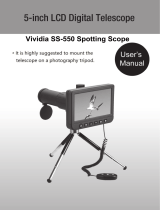
8
Contents
Drive (shooting method) ............................................................. 69
Single ............................................................................................ 69
Continuous .................................................................................... 69
Burst ............................................................................................. 70
Timer ............................................................................................. 70
Auto Exposure Bracketing (AE Bracket) ......................................... 71
White Balance Bracketing (WB Bracket) ........................................ 71
Picture Wizard Bracketing (P Wiz Bracket) ..................................... 72
Bracketing setting .......................................................................... 72
Flash............................................................................................. 73
Flash options ................................................................................. 73
Correcting the red-eye effect ......................................................... 74
Adjusting the flash intensity ............................................................ 74
Metering ....................................................................................... 75
Multi .............................................................................................. 75
Center-weighted ............................................................................ 76
Spot .............................................................................................. 76
Measuring the exposure value of the focus area ............................ 77
Smart Range ................................................................................ 78
Color space ................................................................................. 79
Exposure compensation ............................................................. 80
Video functions............................................................................ 81
Movie AE mode ............................................................................. 81
Multi Motion .................................................................................. 81
Fader ............................................................................................. 82
Voice ............................................................................................. 82
Chapter 3
Playback/Editing
Searching and managing files .................................................... 84
Viewing photos .............................................................................. 84
Viewing image thumbnails ............................................................. 84
Viewing files by category in Smart Album ....................................... 85
Viewing files as a folder.................................................................. 85
Protecting files ............................................................................... 85
Deleting files .................................................................................. 86
Deleting a single file ......................................................................... 86
Deleting multiple files ....................................................................... 86
Deleting all files................................................................................ 86
Viewing photos ............................................................................ 87
Enlarging a photo .......................................................................... 87
Viewing a slide show ..................................................................... 87
Auto rotating .................................................................................. 88
Playing videos ............................................................................. 89
Trimming a video during playback .................................................. 89
Capturing an image during playback ............................................. 90
Editing photos ............................................................................. 91
Options ......................................................................................... 91






















